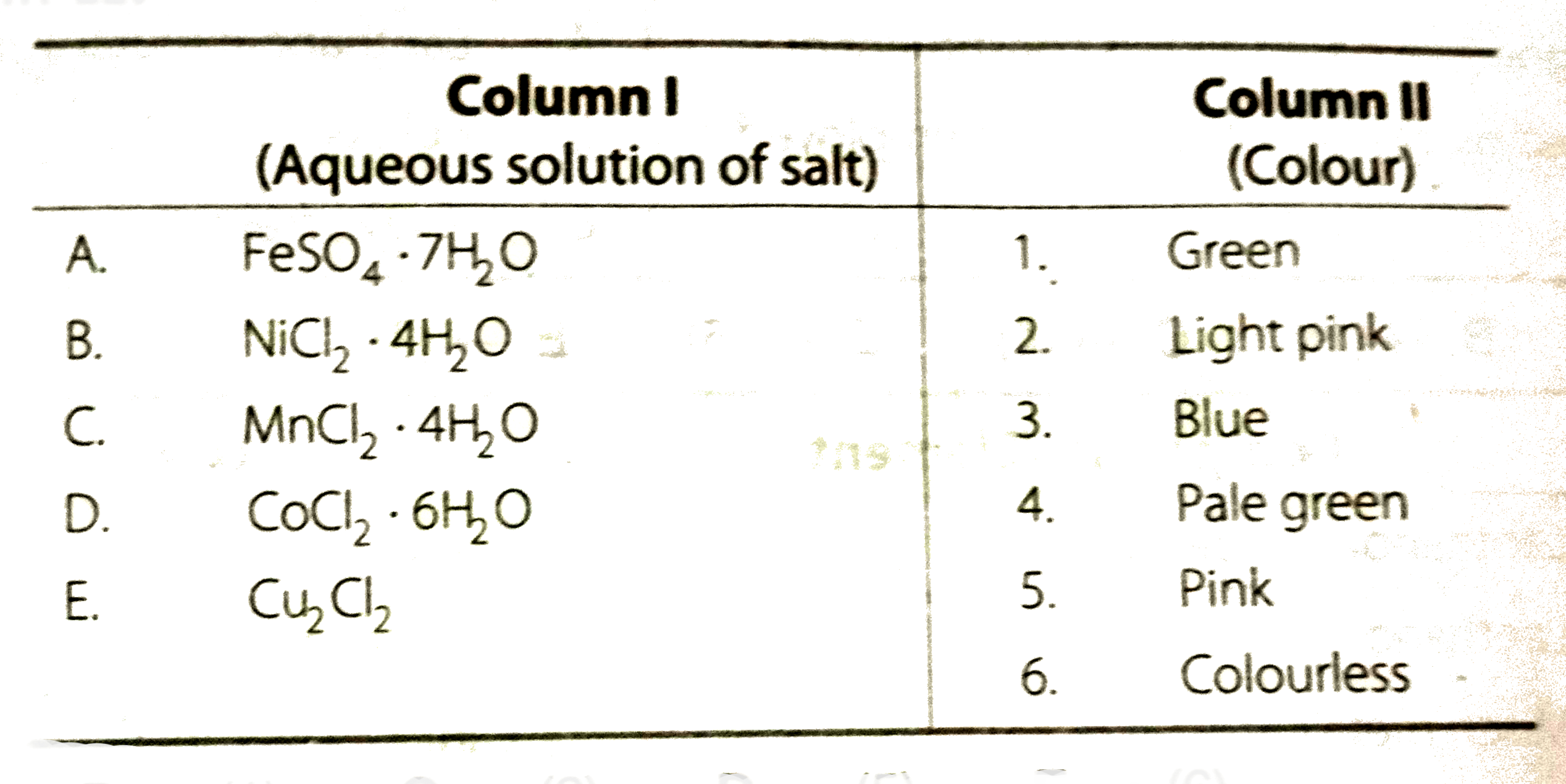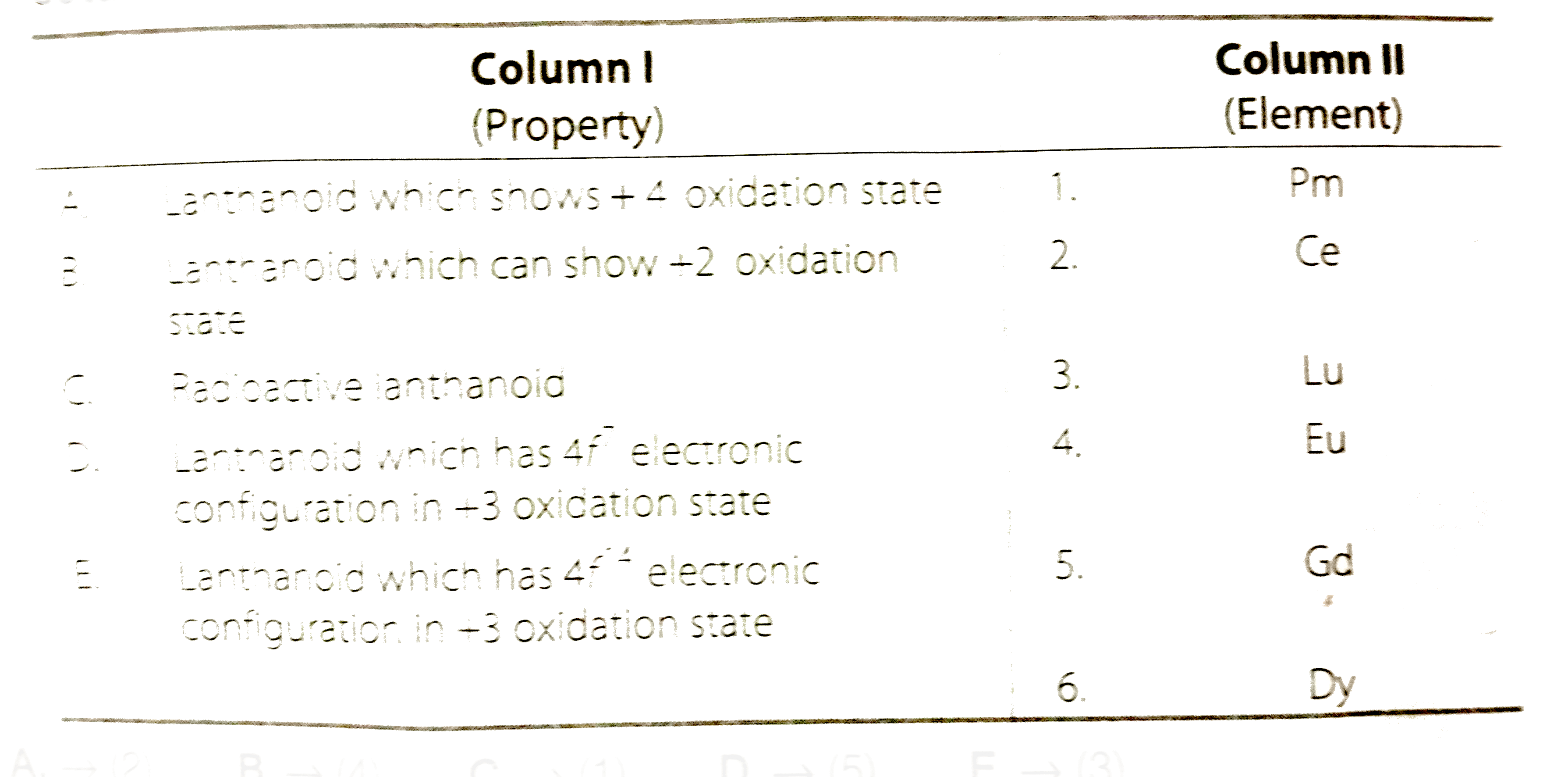Short Answer Type Question from NCERT CHEMISTRY (ENGLISH) D AND F-BLOCK ELEMENTS for Class 12
| Class 12 | CHEMISTRY |
| Chapter | D AND F-BLOCK ELEMENTS |
| NCERT CHEMISTRY (ENGLISH) | Short Answer Type Question |
| Medium | English |
| Academic Year | 2023-2024 |
Question 14
Interstitial compounds are formed when small atoms are trapped inside the crystal lattice of metals. Which of the following is not the characteristic properties of interstitial compounds?
I. They have high melting points in comparison to pure metals.
II. They are very hard.
III. They retain metallic conductivity.
IV. They are chemically very reactive.View SolutionQuestion 65
When a chromite ore (A) is fused with sodium carbonate in free excess of air and the product is dissolved in water, a yellow solution of compound (B) is obtained. After treatment of this yellow solution with sulphuric acid, compound (C ) can be crystallised from the solution. When compound (C ) is treated with KCl, orange crystals of compound (D) crystallise out. Identify A to D and also explain the reactions. View SolutionQuestion 66
When an oxide of manganese (A) is fused with KOH in the presence of an oxidising agent and dissolved in water, it gives a dark green solution of compound (B). Compound (B) disproportionates in neutral or acidic (C ) oxidises potassium iodide solution to a compound (D) and compound (A) is also formed. Identify compounds A to D and also explain the reactions involved. View SolutionQuestion 67
On the basis of lanthanoid contraction, explain the following:
(i) Nature of bonding in La2O3 and Lu2O3.
(ii) Trends in the stability of oxo salts of lanthanoids from La to Lu.
(iii) Stability of the complexes of lanthanoids.
(iv) Radii of 4d and 5d block elements.
(v) Trends in acidic character of lanthanoids oxides. View SolutionQuestion 68
Answer the following questions
(i) Which element of the first transition series has highest second ionisation enthalpy?
(ii) Which element of the first transition series has highest third ionisation enthalpy?
(iii) Which element of the first transition series has lowest enthalpy of atomisation?
(b) Identify the metal and justify your answer.
(i) Carbonyl M(CO)5
(ii) MO3FView SolutionQuestion 71
A violet compound of manganese (A) decomposes on heating to liberate oxygen and compounds (B) and (C ) of manganese are formed. Compound (C ) reacts with KOH in the presence of potassium nitrate to give compound (B). On heating compound (C ) with conc. H2SO4 and NaCl, chlorine gas is liberate and a compound (D) of manganese alongwith other products is formed. Identify compounds A to D and also explain the reaction involved. View Solution







